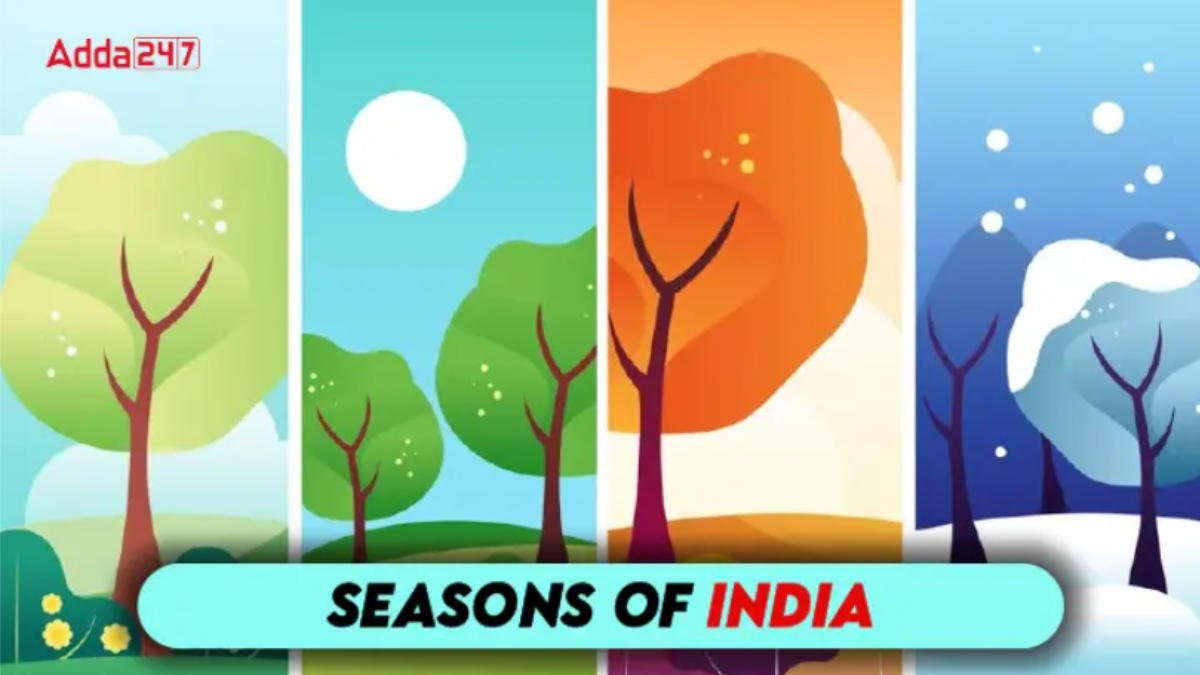Table of Contents
Seasons of India
India experiences four distinct seasons Summer, Monsoon, Autumn, and Winter. Summer, from March to June, is hot and dry. The monsoon season, from June to September, brings heavy rainfall across the country. Autumn, in October and November, is marked by mild temperatures and clear skies, often accompanied by festivals. Winter, from December to February, varies from chilly in the north to pleasantly cool in the south, with celebrations like Diwali and Christmas adding to the festive atmosphere. Each season contributes to India’s cultural richness and diversity.
How Many Seasons in India
In India, we experience four primary seasons: summer, monsoon, autumn, and winter, each bringing its distinct weather patterns and cultural significance.
Summer Season in India (March to June)

- Summer in India is characterized by intense heat and dry weather, particularly in the northern and central regions.
- Temperatures often soar above 40°C (104°F) in many parts of the country, prompting people to seek relief indoors or in cooler hill stations.
- Heat Waves start to appear towards the end of April, and reach their peaks in May and June.
- Lasts till the arrival of the southwest monsoon.
- In most cases, heat waves last four to five days.
- Condition to declare heat wave: there should be a 4-degree variation in temperature to declare the heat wave.
- The season also marks the onset of vacations, with families planning trips to hill stations like Shimla, Manali, and Ooty to escape the heat.
Monsoon Season in India (June to September)

- The monsoon season brings relief from the scorching summer heat as torrential rains sweep across the country.
- It is also called the southwest monsoon because it proceeds southwestward after crossing the equator.
- These rains are vital for agriculture, replenishing water reservoirs, and sustaining livelihoods.
- While the monsoon season can lead to flooding and disruption, it is also a time of rejuvenation for the land and an integral part of India’s cultural fabric.
Autumn Season in India (October to November)

- Autumn in India signifies a transition period marked by mild temperatures and clear skies.
- It is a time of harvest festivals and cultural celebrations, such as Navaratri and Diwali, which illuminate the country with vibrant colors and traditions.
- The weather during autumn is generally pleasant, making it an ideal time for outdoor activities and sightseeing.
Winter Season in India (December to February)

- Winter varies across India, with the northern regions experiencing cold temperatures and even snowfall, while the southern parts remain relatively warm.
- It is a season of festivities, with Christmas, New Year, and Lohri being celebrated with enthusiasm across the country.
- Winter also offers opportunities for trekking, camping, and exploring the rich cultural heritage of India.
- In essence, the seasons of India not only influence the weather but also shape the rhythm of life, agriculture, and cultural festivities throughout the year, making each season a unique and cherished aspect of Indian life.
6 Traditional Seasons of India
- Vasanta (Spring) – February and March:
Vasanta marks the onset of spring when nature begins to awaken from its winter slumber.
The weather is pleasant, with mild temperatures and blooming flowers adorning the landscape.
Festivals like Holi, celebrating the victory of good over evil and the arrival of spring, are celebrated with colours and enthusiasm.
- Grishma (Summer) – April and May:
Grishma is the hot and dry summer season characterized by scorching temperatures and parched landscapes.
It is a time when water bodies start to dry up, and people seek relief from the heat through cooling drinks and shade.
Traditional practices like staying indoors during the hottest hours of the day are common during this season. - Varsha (Monsoon) – June and July:
Varsha heralds the arrival of the monsoon, bringing relief from the summer heat with its cooling rains.
The landscape transforms into lush greenery, and rivers swell with rainwater, vital for agriculture and replenishing water sources.
Monsoon festivals like Teej and Raksha Bandhan are celebrated with fervor, symbolizing the joy and abundance brought by the rains. - Sharad (Autumn) – August and September:
Sharad marks the transition from the monsoon to autumn, characterized by clear skies, pleasant temperatures, and a bountiful harvest.
It is a time of celebration and thanksgiving, with festivals like Navaratri and Durga Puja honoring the goddess Durga and the victory of good over evil.
The air is filled with a sense of festivity and the aroma of freshly harvested crops. - Hemanta (Pre-Winter) – October and November:
Hemanta is the prelude to winter when temperatures gradually start to cool, and nature prepares for the colder months ahead.
It is a time of transition, with landscapes adorned with colourful foliage as trees shed their leaves.
Festivals like Diwali, celebrating the triumph of light over darkness, are celebrated with lighting lamps, fireworks, and sharing sweets. - Shishira (Winter) – December and January:
Shishira is the winter season characterized by chilly temperatures, especially in the northern regions, and clear skies.
It is a time for cosying up around bonfires, enjoying seasonal delicacies, and celebrating festivals like Christmas and Makar Sankranti.
In some parts of India, winter heralds the blooming of flowers like the saffron crocus, adding colour to the wintry landscape.


 TSPSC Group 1 Question Paper 2024, Downl...
TSPSC Group 1 Question Paper 2024, Downl...
 TSPSC Group 1 Answer key 2024 Out, Downl...
TSPSC Group 1 Answer key 2024 Out, Downl...
 Cabinet Ministers of India 2024, New Cab...
Cabinet Ministers of India 2024, New Cab...







